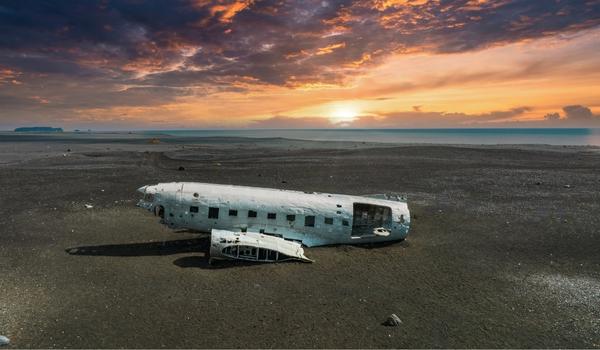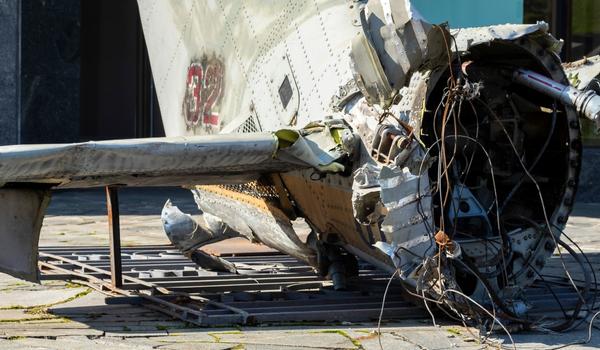On a clear evening in January 1973, a passenger plane carrying 129 people took off from Reykjavik, Iceland, bound for New York City. However, the flight would never reach its destination. Tragically, the plane crashed into the side of a mountain, killing all on board. The Iceland airplane crash remains one of the worst aviation disasters in the country’s history, with a lasting impact on the victims’ families, the aviation industry, and Iceland as a whole. In this article, we will examine the background of the incident, the causes of the crash, the impact it had, and the legacy it left behind.
Background

Iceland’s aviation history
Iceland has a long history of aviation, with the first commercial flight taking place in 1915. Since then, the country’s airline industry has grown to become a vital component of its economy, connecting Iceland to the rest of the world.
Details of the specific crash incident
On January 21, 1973, a Douglas DC-8 passenger plane operated by Icelandair, took off from Reykjavik’s Keflavik International Airport bound for New York City’s JFK Airport. The flight, designated as Flights FI-660, was carrying 129 passengers and crew. However, the plane would never reach its destination. It crashed into the side of a mountain called Kaldbakur, located in the Westfjords of Iceland, killing all on board. The cause of the crash was determined to be a combination of poor visibility, a navigational error, and a lack of proper communication.
Causes of the Crash

Investigation findings
The investigation into the crash revealed that the primary cause of the accident was a navigational error by the flight crew. The crew had mistaken the mountain for a different location, and as a result, flew into it. The investigation also revealed that poor visibility due to adverse weather conditions, and lack of proper communication between the ground and the flight crew, contributed to the accident.
Mechanical failures
The investigation found that there were no mechanical failures that contributed to the crash. All systems on the plane were functioning normally and no defects were found.
Human error
The investigation found that human error played a significant role in the crash. The navigation error made by the flight crew, as well as the lack of proper communication between the crew and ground control, were determined to be the primary causes of the accident. The crew’s decision-making and actions in the moments leading up to the crash were also found to have contributed to the accident.
Impact

Casualties
The Iceland airplane crash resulted in the deaths of all 129 people on board, including passengers and crew. It was a tragic loss for their families and loved ones, as well as the wider community.
Damage to the aircraft
The crash resulted in the complete destruction of the aircraft, with no survivors. The crash site was located in a remote area, making it difficult to access and recover the wreckage.
Impact on the aviation industry
The crash had a significant impact on the aviation industry in Iceland and internationally. It led to changes in regulations and safety measures, and also had an effect on public perception of air travel. The incident also had a financial impact on Icelandair as the company had to deal with the aftermath of the crash and compensate the families of the victims.
Aftermath
Rescue and recovery efforts
Rescue and recovery efforts were hindered by the remote location of the crash site and the harsh weather conditions. Despite the difficulties, rescue teams were able to reach the crash site and recover the remains of the passengers and crew.
Memorials and tributes
In the aftermath of the crash, memorials and tributes were held to honor the victims and their families. The country and the aviation industry came together to remember those who were lost and to support the loved ones they left behind.
Changes in regulations and safety measures
The crash led to changes in regulations and safety measures in the aviation industry. These changes included improvements in navigation, communication, and flight planning procedures, as well as increased focus on safety culture and training for flight crews. These changes helped to prevent similar accidents from happening in the future and to improve the overall safety of air travel.
Legacy
Public perception of the crash
The Iceland airplane crash had a significant impact on public perception of air travel in Iceland and internationally. The incident led to increased awareness of the importance of safety in the aviation industry and reinforced the need for strict regulations and safety measures.
Impact on the families and loved ones of victims
The crash had a profound impact on the families and loved ones of the victims. Many lost loved ones and had to come to terms with the tragedy. Support and counseling were provided to help them cope with their loss.
Changes in aviation safety standard
The crash led to significant changes in aviation safety standards, both in Iceland and internationally. The accident investigation led to recommendations for improvements in navigation, communication and flight planning procedures, as well as increased focus on safety culture and training for flight crews. These changes helped to prevent similar accidents from happening in the future and to improve the overall safety of air travel. The legacy of the crash serves as a reminder of the importance of safety in the aviation industry and the need to continue to strive for improvements in safety.
Conclusion
The Iceland airplane crash of 1973 was a tragic event that resulted in the loss of 129 lives. The accident had a profound impact on the victims’ families, the aviation industry, and Iceland as a whole. The investigation into the crash revealed that a combination of poor visibility, a navigational error, and a lack of proper communication were the primary causes of the accident. The crash led to changes in regulations and safety measures, and also had an effect on public perception of air travel. The incident serves as a reminder of the importance of safety in the aviation industry and the need to continue to strive for improvements in safety. The legacy of the crash will always be remembered as a tragic event that had a lasting impact on those who lost loved ones, the aviation industry and the country as a whole.
